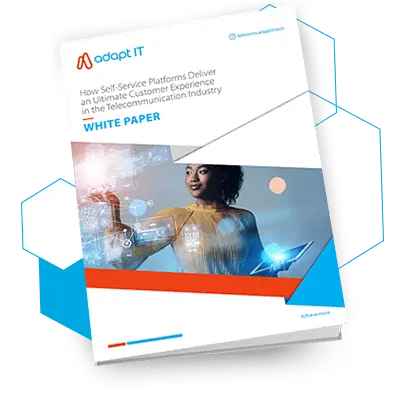Anyone remotely familiar with the telecoms industry will have heard of Verizon Wireless, AT&T, Sprint and T-Mobile; the biggest cell phone carriers in the United States.
Table of Contents
ToggleBut there are a huge amount of smaller, more often than not, prepaid carriers, and they are called MVNOs. For consumers, it’s great news, because MVNOs often offer less expensive, flexible mobile plans than the major carriers Big Boys.
What is an MVNO?
MVNO is short for Mobile Virtual Network Operator.
MVNOs, unlike their Big Brothers Verizon, AT&T, Sprint and T-Mobile, are small carriers that either lease cellular coverage and data bandwidth from, or share it with a member of the Big Boys, then resell it. MVNOs don’t actually own any hardware; it’s the Big Boys who own and operate it.
Now, an MVNO is sometimes completely owned by one of the bigger carriers, or they are independent and lease space from another network. For example, Cricket Wireless is owned by AT&T who allows Cricket Wireless to operate on their network, and Consumer Cellular is an independent entity that leases space on another’s network.
| MVNO | Owned By | Network Coverage Provider |
| Cricket Wireless | AT&T | AT&T |
| Virgin Mobile | Sprint | Sprint |
| Boost | Sprint | Sprint |
| Straight Talk | TracFone | Verizon, AT&T, T-Mobile and Sprint |
| Republic Wireless | N/A | Sprint |
It’s worth noting though, that MVNO users will at times (but not in all cases) be relegated to lesser priorities than the customers of the big brand carrier, and so speeds will be slower than what the customers of the Big Boys enjoy.
Sticking with the Cricket Wireless and AT&T example, while AT&T customers enjoy LTE speeds of 20Mbps and more, Cricket Wireless customers speeds are capped at less than half of that at 8Mbps, depending on where they are situated.
MVNOs may also offer limited phones, unlike their Big Boy counterparts.
MVNOs usually serve a particular region
While it’s not strictly true of all MVNOs, as some do operate globally, for example Virgin Mobile and Tune Talk, the majority top MVNOs serve a specific market in a specific region because that is how they differentiate themselves from competitors.
End user benefits of MVNOs
MVNOs are flexible, and for the most part, more affordable than the Big Boys and their services, even if they do come with restrictions, but they also come with greater flexibility and often cheaper costs.
The user needs to decide which is more important: higher data speeds, or cheaper services and short-term contracts.
List of some of the major MVNOs
Some of the biggest MVNOs include Freedom Pop, Lycamobile, Net 10, Red Pocket, T-Mobile Prepaid, GIV Mobile, and Verizon Prepaid, to name but a few.
Difference between MNO, MVNO, MVNE & MVNA
MNO stands for Mobile Network Operator and is also known as a wireless service provider. The MNO is at the top of the telecoms pyramid, as it controls or owns all the components that are required to sell and deliver services like international calling, talk and text, mobile plans and wireless plans to an end-user.
Examples of MNOs include Verizon Wireless, AT&T, Sprint and T-Mobile.
The MVNO, MVNE and MVNA all have their own particular role in providing telecom services, and the MVNO may need the MVNE in order to offer services, but this is not always the case.
The MVNE is a telecom solution while the MVNA is a business model.
| MVNO | MVNE | MVNA |
| MVNOs (Mobile Virtual Network Operator) resells wireless communications services by purchasing minutes from an MNO at wholesale prices and then resells those minutes at reduced retail prices under its own business brand. | MVNE (Mobile Virtual Network Enabler) provides network infrastructure and related services to enable MVNOs to offer services to their own customers. The MVNE does not have a relationship with consumer customers. | MVNA (Mobile Virtual Network Aggregator) aggregates lots of small MVNOs and optimising the collective might, connects to the operator as one single, big MVNO. MVNA’s don’t generally have their own direct users. |
What do MVNOs require to succeed?
For MVNOs to succeed, they require:
- The right network and the MNO or MVNE they partner with must offer flexibility.
- Find a niche to zone in on, for example, offering mobile money in underdeveloped countries.
- An effective business and marketing plan that focuses on the needs of their target market.
- Use the right technology.
- Provide an exceptional customer service journey and focus on operational excellence.
Get more tips on running a successful MVNO.
Future disruptors bring opportunities for MVNOs
There are some major disruptions on the horizon, and for MVNOs, can be viewed with trepidation, or as magnificent opportunities:
- The IoT requires MVNOs to understand how each industry will begin utilising IoT, and come up with solutions for those industries, or one industry. Find out more about how IoT provides new opportunities and transformation in the telecoms industry.
- 5G will allow MNVOs to run ‘mini networks’ in specific niches, or could be part of a model that specialises in various service levels within a slice. Find out how 5G will revolutionise the MVNO market.
David Dungay, Editor of Comms Business Magazine, says, “While it’s hard to predict exactly how MVNOs will evolve, one thing is for sure; the virtual operators who are willing to embrace digital transformation, build open networks and launch unique services around a niche community will have greater success.”
Explore the Power of CDR

Steven Sutherland experienced Adapt IT Divisional Executive, dynamic business leader for their Telecoms Division with a demonstrated 25-year history in the telecommunications and IoT sectors. Strong global marketing, sales, and business development professional with 15 plus years focused experience in the Southern and Rest-of-Africa markets and a unique blend of entrepreneurial spirit combined with a passion for both technology and business.
At Adapt IT Steven is responsible for building and growing the Telecoms Division on top of its industry-proven software competencies including but not limited to Customer Experience and Self Service, NextGen VAS, IoT, FINTECH, and Advanced Analytics. Steven is always looking forward to an opportunity to demonstrate the value that his 20 plus years of experience in these disciplines can bring to your business







